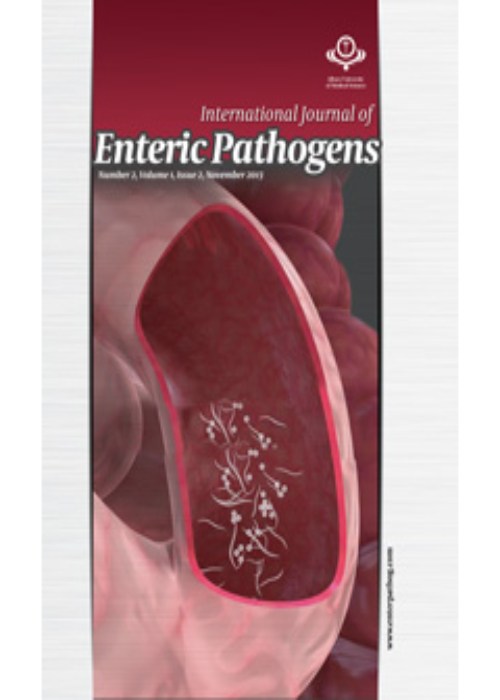The Anthrax Disease in Iran From 2000 to 2016: The Predominance of Cutaneous and Gastrointestinal Form
Author(s):
Article Type:
Review Article (دارای رتبه معتبر)
Abstract:
Context: Anthrax is a zoonotic and occupational disease caused by bacterium Bacillus anthracis. The agent produces spores which persist in the environment for years. This review assessed previous reports on anthrax disease in Iran from 2000 to 2016.
Evidence acquisition: The reports of anthrax from 2000 to 2016 were reviewed. The keywords "Bacillus anthracis", "Anthrax", "clinical signs", "Iran" and "zoonosis" were investigated in the searching databases such as "Google Scholar", "Google", "PubMed" and other sites. The reports of soil isolation and spores from environments were excluded. However, the clinical outcome of the cases, history of animal exposure, wool contaminations and meat in slaughterhouses were included. Results of Persian reports were also included in this review. Data were analyzed using Excel and GraphPad Prism version 6.1. The standardized mean difference (SMD) was used for data analysis.. Overall, 768 cases of anthrax were found in human, sheep, goats and cattle. Six hundred of the human cases aged between 2.5 and 71 years old were included. Four-hundred ten (68.33%) patients were male (mean age=28.1 ± 1.5) and 190 (31.66%) patients were female (mean age = 17±1.5). Clinical manifestations in patients were mostly in 2 cutaneous (56.6%) and gastrointestinal (42.83%) forms. Sporadic anthrax outbreaks occurred in the country in 2007, 2008 and 2011. No molecular typing has been performed for B. anthracis strains countrywide. The virulence factors encoded by the genes located on plasmids pXO1 and pXO2 were detected in various areas with high prevalence.
Evidence acquisition: The reports of anthrax from 2000 to 2016 were reviewed. The keywords "Bacillus anthracis", "Anthrax", "clinical signs", "Iran" and "zoonosis" were investigated in the searching databases such as "Google Scholar", "Google", "PubMed" and other sites. The reports of soil isolation and spores from environments were excluded. However, the clinical outcome of the cases, history of animal exposure, wool contaminations and meat in slaughterhouses were included. Results of Persian reports were also included in this review. Data were analyzed using Excel and GraphPad Prism version 6.1. The standardized mean difference (SMD) was used for data analysis.. Overall, 768 cases of anthrax were found in human, sheep, goats and cattle. Six hundred of the human cases aged between 2.5 and 71 years old were included. Four-hundred ten (68.33%) patients were male (mean age=28.1 ± 1.5) and 190 (31.66%) patients were female (mean age = 17±1.5). Clinical manifestations in patients were mostly in 2 cutaneous (56.6%) and gastrointestinal (42.83%) forms. Sporadic anthrax outbreaks occurred in the country in 2007, 2008 and 2011. No molecular typing has been performed for B. anthracis strains countrywide. The virulence factors encoded by the genes located on plasmids pXO1 and pXO2 were detected in various areas with high prevalence.
Conclusion
Cutaneous and gastrointestinal anthrax are 2 main manifestations of the disease in Iran. Male patients were significantly more infected. Although rare, anthrax continues to be a dreadful consequence of herds or soil exposure and consumption of undercooked meat of infected animals. Education plans and proper animal vaccination plans with the consideration of virulence factors are helpful for the prevention of the disease.Keywords:
Language:
English
Published:
International Journal of Enteric Pathogens, Volume:6 Issue: 1, Feb 2018
Pages:
10 to 13
magiran.com/p1802028
دانلود و مطالعه متن این مقاله با یکی از روشهای زیر امکان پذیر است:
اشتراک شخصی
با عضویت و پرداخت آنلاین حق اشتراک یکساله به مبلغ 1,390,000ريال میتوانید 70 عنوان مطلب دانلود کنید!
اشتراک سازمانی
به کتابخانه دانشگاه یا محل کار خود پیشنهاد کنید تا اشتراک سازمانی این پایگاه را برای دسترسی نامحدود همه کاربران به متن مطالب تهیه نمایند!
توجه!
- حق عضویت دریافتی صرف حمایت از نشریات عضو و نگهداری، تکمیل و توسعه مگیران میشود.
- پرداخت حق اشتراک و دانلود مقالات اجازه بازنشر آن در سایر رسانههای چاپی و دیجیتال را به کاربر نمیدهد.
دسترسی سراسری کاربران دانشگاه پیام نور!
اعضای هیئت علمی و دانشجویان دانشگاه پیام نور در سراسر کشور، در صورت ثبت نام با ایمیل دانشگاهی، تا پایان فروردین ماه 1403 به مقالات سایت دسترسی خواهند داشت!
In order to view content subscription is required
Personal subscription
Subscribe magiran.com for 70 € euros via PayPal and download 70 articles during a year.
Organization subscription
Please contact us to subscribe your university or library for unlimited access!


